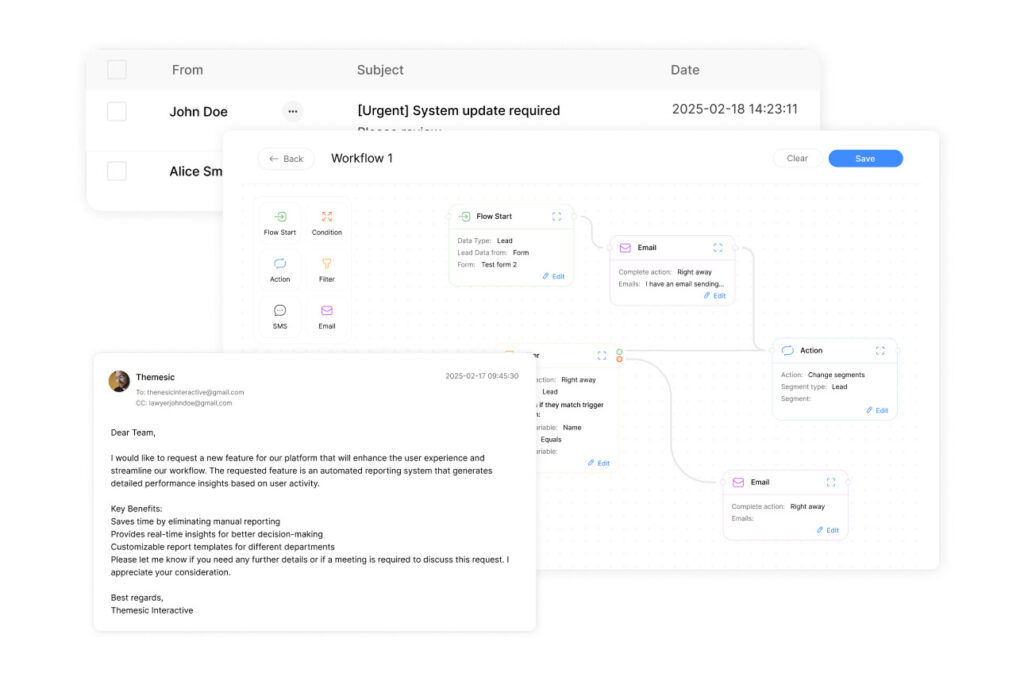Project Template: Nonprofit Fundraising Campaign Template

Interestingly, 65% of mission-driven organizations report struggling to maintain consistent funding streams, often due to fragmented planning processes. Consequently, this gap highlights the critical need for structured frameworks that convert ambitious visions into actionable results.
Notably, effective resource development requires more than good intentions—it demands precision. Furthermore, goal-aligned roadmaps break down complex objectives into measurable phases, allowing teams to track progress while maintaining flexibility. In addition, by integrating financial forecasting with operational timelines, these systems create accountability at every stage.
Undeniably, seasoned professionals recognize the value of adaptable frameworks that address common pain points. For instance, from donor engagement strategies to expense tracking, comprehensive tools eliminate redundant tasks while ensuring compliance with industry standards. As a result, organizations gain clarity on resource allocation, enabling smarter decisions about staff roles and outreach priorities.
Moreover, centralized planning platforms also foster collaboration across departments. Simultaneously, board members, volunteers, and staff align efforts through shared timelines and transparent communication channels. Ultimately, this cohesion proves vital when navigating unexpected challenges or capitalizing on emerging opportunities during year-long initiatives.
Key Takeaways
- Structured frameworks reduce planning time by 40% compared to ad-hoc approaches
- Integrated budgeting features prevent overspending while maximizing impact
- Customizable timelines adapt to seasonal fluctuations in donor activity
- Performance dashboards highlight growth areas needing strategic adjustments
- Collaboration tools maintain team alignment across multiple initiatives
Introduction: Maximizing Your Nonprofit’s Fundraising Potential
Mission-driven teams often juggle donor outreach, budget management, and program execution with shrinking resources. “The biggest mistake is treating fundraising as an afterthought,” notes a philanthropy strategist. “Organizations need battle-tested systems to turn aspirations into bankable results.”
Overview of Fundraising Challenges
Clearly, today’s landscape demands more than passion. Simultaneously, economic shifts and fragmented attention spans force teams to work smarter. Inevitably, limited staffing and unpredictable funding create pressure to achieve more with less—a reality 78% of mission-focused groups face annually.
The Value of a Well-Planned Campaign
Specifically, structured frameworks transform chaos into clarity. Additionally, they map revenue targets to actionable steps, from identifying donor segments to timing outreach. Impressively, teams using data-driven strategies report 35% higher retention rates than those relying on sporadic appeals.
Moreover, effective plans also build resilience. Consequently, they anticipate roadblocks like seasonal donation dips or shifting priorities. Remarkably, one community health group doubled major gifts by aligning their calendar with grant cycles—proof that proactive design outperforms reactive scrambling.
Understanding the Essentials of a Fundraising Plan

Ultimately, organizations seeking sustainable growth recognize that structured roadmaps outperform improvised efforts. Accordingly, a well-designed framework turns aspirations into measurable outcomes by connecting financial targets with operational capabilities. In turn, it transforms uncertainty into actionable steps while maintaining flexibility for evolving circumstances.
Key Components Every Plan Must Include
Effective frameworks start with specific revenue targets grounded in historical data and donor capacity assessments. Teams analyze past performance to set realistic projections, balancing ambition with organizational capacity. Diversification matters—successful models integrate individual contributions, grants, and corporate partnerships to minimize risk.
Comprehensive approaches address every donor interaction stage. From initial outreach to long-term retention strategies, they ensure consistent engagement. Detailed expense tracking also proves critical, accounting for staff hours, technology costs, and outreach materials to maintain budget integrity.
Timelines with clear milestones keep initiatives on schedule. Quarterly reviews allow teams to adjust tactics based on real-time feedback. One education initiative boosted donations by 22% after aligning outreach phases with academic calendars.
Aligning Your Goals with Organizational Priorities
Resource development efforts must directly support broader mission objectives. When a healthcare group linked their annual appeal to equipment upgrades, they secured 40% more major gifts. This synergy between purpose and execution builds stakeholder confidence.
Robust frameworks also prepare teams for challenges. Contingency planning identifies potential disruptions—like economic downturns—and establishes response protocols. Regular progress reports keep boards and volunteers informed, ensuring unified action across departments.
The Importance of Strategic Goal Setting for Nonprofits
Organizations that thrive long-term build financial strategies on evidence rather than assumptions. Effective planning starts by examining past performance through three lenses: revenue streams, engagement patterns, and operational constraints.
Setting Realistic Revenue Targets
Data-driven approaches separate sustainable growth from wishful thinking. Teams analyze CRM records and previous campaign outcomes to identify trends. One community initiative increased recurring donations by 18% after discovering 63% of their mid-level contributors preferred quarterly giving options.
| Scenario Type | Data Basis | Growth Rate | Risk Factors |
|---|---|---|---|
| Conservative | 3-year averages | 5-7% | Economic uncertainty |
| Realistic | Current donor capacity | 12-15% | Staff bandwidth |
| Stretch | Untapped networks | 20-25% | Market saturation |
Smart frameworks balance quantitative metrics with qualitative insights. They track dollar amounts while monitoring engagement rates and community sentiment. Monthly check-ins allow adjustments when external factors shift priorities.
Seasoned leaders also establish contingency plans. A youth program maintained 89% of their revenue target during supply chain disruptions by activating emergency grant protocols outlined in their original strategy.
Using the Nonprofit Fundraising Campaign Template to Drive Success

Structured planning tools transform chaotic efforts into organized strategies. Pre-built frameworks eliminate the guesswork by embedding proven methodologies into every planning phase. Teams gain immediate access to checklists, budget trackers, and timeline builders that align with sector standards.
Optimizing Strategy Execution
These systems streamline collaboration through centralized task assignments and progress dashboards. Development directors report saving 15-20 hours monthly by automating repetitive administrative work. One arts organization completed their annual strategy in 11 days instead of six weeks using guided templates.
Effective frameworks prioritize adaptability without sacrificing structure. They prompt teams to review metrics quarterly while maintaining core revenue targets. Data-driven adjustments become routine rather than reactive—a critical advantage when market conditions shift unexpectedly.
Key benefits include:
- Built-in accountability measures tracking team responsibilities
- Customizable checkpoints for evaluating donor response rates
- Integrated budget calculators preventing overspending
Mission-driven groups using these tools redirect 30% more staff hours toward donor relationships. As one executive notes: “Our team now focuses on impact rather than logistics.” This shift proves vital for sustaining long-term community support.
Analyzing Historical Data and Setting Revenue Goals
Accurate financial planning begins with understanding what worked—and what didn’t—in previous cycles. Teams that dissect past outcomes gain actionable insights for smarter goal setting, turning raw numbers into strategic roadmaps.
Mining Patterns from Previous Cycles
Start by categorizing last year’s income streams: individual gifts, grants, and corporate partnerships. Compare actual earnings against initial projections. This reveals gaps in forecasting methods and highlights reliable funding sources worth expanding.
Effective analysis goes beyond totals. Calculate donor acquisition costs and retention rates across channels. One environmental group discovered email campaigns generated 37% higher retention than social media efforts—intel that reshaped their annual budget priorities.
Key metrics to evaluate:
- Average gift size trends over three years
- Seasonal fluctuations in contribution volumes
- ROI comparisons between outreach methods
External factors like economic shifts or policy changes must also inform projections. When a literacy initiative accounted for new education laws, they adjusted their grant-seeking timeline and secured 28% more public funding.
Set targets using a blended approach: 70% based on historical performance, 30% on growth ambitions. Quarterly reviews allow course corrections while maintaining momentum toward annual goals. This balance prevents overextension while encouraging measured progress.
Developing a Comprehensive Narrative Fundraising Strategy
Storytelling drives 42% of successful donor conversions, yet most groups lack cohesive messaging systems. Powerful narratives transform abstract goals into relatable journeys that connect supporters to tangible outcomes. This approach bridges the gap between organizational needs and contributor motivations.
Crafting Your Case for Support
Effective narratives merge three elements: proven community impact, clear resource requirements, and urgent calls to action. Teams should integrate specific success metrics—like “250 meals served weekly”—to demonstrate stewardship credibility. One animal welfare group increased major gifts by 33% after showcasing veterinary cost breakdowns in their appeals.
| Donor Segment | Core Motivations | Preferred Channels |
|---|---|---|
| Major Contributors | Legacy building, tax planning | Private meetings, impact reports |
| Corporate Partners | Brand alignment, employee engagement | Sponsorship packages, events |
| Grassroots Supporters | Immediate community impact | Social media, email updates |
Tailoring Messaging to Different Donor Segments
Strategic segmentation prevents generic outreach that dilutes engagement. Development teams using customized value propositions achieve 28% higher response rates. A youth mentorship program redesigned their foundation proposals to emphasize longitudinal outcome studies, securing three multi-year grants.
Regular message testing ensures relevance across audiences. Focus groups with board members and beneficiaries help refine language. Quarterly A/B testing of email subject lines and storytelling formats keeps communication fresh and data-informed.
Crafting a Detailed Revenue Budget and Expense Allocation

Financial stability begins with mapping every dollar’s journey from donor commitment to program impact. Teams that master this process achieve 23% higher net returns than peers using generalized estimates. Precise allocation turns aspirations into operational reality.
Breaking Down Revenue Sources
Effective budgeting starts by analyzing three-year income patterns. One housing initiative discovered 58% of their contributions came from recurring donors—intel that reshaped their grant-seeking strategy. Diversified streams prevent overreliance on volatile sources.
| Revenue Category | Example Sources | Typical Allocation |
|---|---|---|
| Committed | Multi-year grants, pledges | 40-50% |
| Projected | Annual appeals, events | 30-35% |
| Growth | New partnerships, campaigns | 15-20% |
Contingency buffers protect against unexpected shortfalls. Groups allocating 7-10% for emergency reserves maintain operations during economic dips. This foresight separates sustainable models from fragile ones.
Estimating Necessary Expenses
Smart cost tracking distinguishes between fixed and variable outlays. While salaries and software licenses remain stable, outreach materials and event costs fluctuate. Teams using real-time budget dashboards reduce overspending by 19%.
ROI analysis guides smarter investments. One arts group reallocated 25% of print advertising funds to digital storytelling after discovering 68% higher engagement rates. Regular audits ensure resources align with evolving priorities.
Integrated plans bridge financial targets with mission delivery. When a literacy program tied expense categories to student outcomes, they secured 14% more corporate sponsors. This alignment proves budgets aren’t spreadsheets—they’re blueprints for impact.
Mapping Out a Successful Fundraising Timeline
Strategic scheduling transforms abstract goals into actionable roadmaps. Teams that master calendar alignment achieve 27% higher donor retention by balancing outreach intensity with supporter capacity. This approach turns annual aspirations into sequenced steps while maintaining flexibility for emerging opportunities.
Identifying Key Dates and Milestones
Effective planners integrate external rhythms like holiday giving seasons and fiscal year-ends. One community initiative boosted major gifts by 19% after aligning cultivation cycles with corporate budgeting periods. Quarterly evaluations ensure timelines adapt to economic shifts without compromising core objectives.
Essential markers include grant deadlines, stewardship touchpoints, and progress review dates. Teams using milestone tracking reduce last-minute scrambles by 43%. This precision creates space for relationship-building rather than reactive problem-solving.
Coordinating Donor Outreach and Campaign Phases
Sequenced activities prevent engagement fatigue while maximizing impact. A youth program increased response rates by 31% after spacing appeals across three-month intervals. Time-blocked strategies separate cultivation phases from solicitation windows, ensuring supporters receive tailored communication at optimal moments.
Cross-department coordination remains critical. Shared calendars synchronize event planning with grant submissions and reporting cycles. This cohesion helps teams allocate resources effectively while maintaining consistent donor experiences throughout the year.

